PROFILE OF AUTHOR
WELDING PROCESSESS, EQUIPMENT, AND AUTOMATION
HOW MICROPROCESSOR CONTROLLED POWER SOURCE IMPROVES QUALITY & EASE OF WELDING.
| NAME OF AUTHOR: |
M S SUBRAMANIAN
|
| PROFESSION/DESIGNATION: |
WELDING TECHNOLOGIST WITH 52 YEARS OF EXPERIENCE IN THE WELDING FIELD.
|
| E MAIL ID: |
MANIPUNE.60@GMAIL.COM
|
| MOBILE NO: | +91 9822090045 |
| AGE: | 75 YEARS |
| EDUCATIONAL QUALIFICATION: |
FIRST CLASS SCIENCE DEGREE
|
| ORGANISATION: |
SURAKSH ENTERPRISES VICE PRESIDENT IIW PUNE BRANCH
|
| JOB PROFILE/ASSIGNMENTS |
EXPERIENCE ACROSS ALL TYPES OF CUTTING AND WELDING PROCESSES
|
|
CURRENT SPECIALISATION IN GTAW
|
|
|
GMAW AND ORBITAL WELDING.
|
|
| PROFESSIONAL EXPERIENCE: |
HELD IMPORTANT PORTFOLIOS IN
|
|
LEADING INDIAN WELDING GIANTS AND MNCS FROM EUROPE USA.
|
|
|
ESTABLISHED ORBITAL WELDING IN INDIA IN A VERY BIG WAY.
|
HOW MICROPROCESSOR CONTROLLED POWER SOURCE IMPROVES QUALITY & EASE OF WELDING.
Introduction:
Welding is a process of joining metals by producing a heat force developed by FUSION or PRESSURE
One of the FUSION heat form an ELECTRIC ARC.
Some of the popular common welding process in vogue today using ELECTRIC ARC are
| Shielded Metal Arc Welding | SMAW |
commonly called arc welding
|
| Gas Metal Arc Welding | GMAW |
commonly called MIG or CO2 welding
|
| Gas Tungsten Arc Welding | GTAW |
commonly called TIG welding
|
| Submerged Arc Welding | SAW |
commonly called SUBARC welding
|
| Electro Slag Welding | ESW | |
| Carbon Arc Welding | CAW |
For all the above types of welding a power source to create the arc is required.
Evolution:
The first known power source is a battery which paved way for a transformer. Then we graduated to the DC power sources as Alternating Current was not supposed o produce quality welds. The first DC power source was a DC generator. This had associated problems of maintenance and noise, since there were more moving parts. Hence the static rectifiers came in where only the moving component was the cooling fan. In this also since the AC was stepped down and converted to DC there were ripple content. DC is generally called a straight-line output. However, since a three phase AC supply was being converted to DC, it was not possible to avoid the ripples and the best designed machine was having a ripple content of 4.3%. With the advent of semiconductors and their rapid advancement and their extra fast developments, power sources started becoming smaller efficient and with digitisation it became easy to send and receive messages at a fantastically faster rate.

TRANSFORMER WITH OUTPUT TAPPINGS TO CONTROL OUTPUT
MOVING CORE/COIL TRANSFORMER WITH INFINITE OUTPUT CONTROL
SIMPLE LOW COST TRANSFORMER
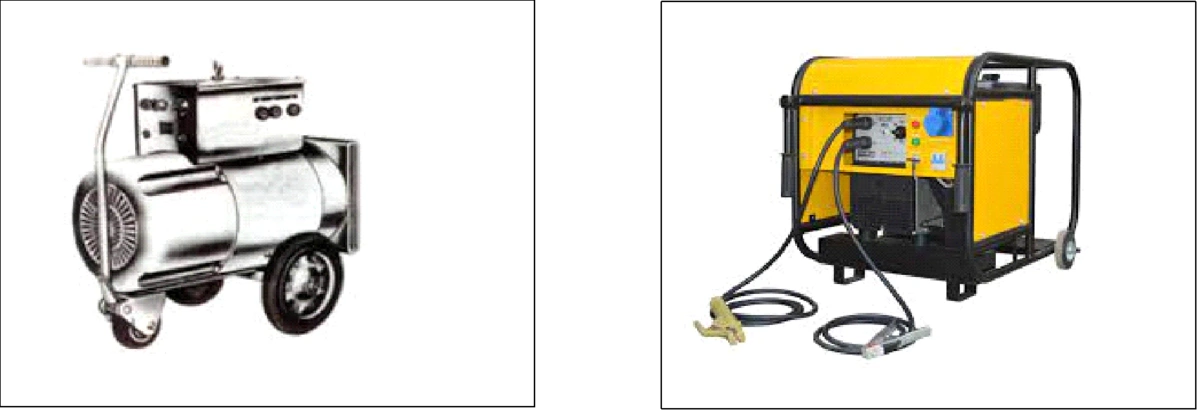
MOTOR GENERATOR DIESEL MOTOR GENERATOR
STATIC RECTIFIERS SCR DIODE BASED OR THYRISTOR BASED WITH FEED BACK AND SOME WITH HEXAPHASE OUTPUT
As far as the welding arc is concerned for welding applications there are two types of controls
- Constant current type: Here the current is maintained constant as set and the arc voltage varies. Used in SMAW and GTAW applications
- Constant voltage type: Here the Voltage is kept constant and the current varies. Used in GMAW applications.
Both produce a typical volt amp curve as shown below

In simple words in
- Constant Current machines theCurrent is set to be constant whereas the Arc Voltage will vary. In SMAW and GTAW machines you set the current and not the voltage as a variable value. For any small variation in the current the variation in the arc voltage is relatively large.
- Constant Voltage machines the Voltage is set to be constant whereas the Arc current will vary. In GMAW machines you set the voltage and not the current as a variable value. For any small variation in the Arc Voltage, you have a very large variation in the current.
The crux to get the best arc and thus obtain a quality defect free weld it is to control the variations in the business end that’s the arc.
There are two components that create havoc and not under our control
The first one is the input supply to the power source from the local electricity authorities. (We are all aware of the quality of power given to us)
The second the welder who must maintain the distance. Despite all the training given to him as a human being he will not be able to do so.
How to achieve this? The brainstorming on this resulted in the invention of Inverters.
What are inverters? How Does It Work?
An inverter welding machine converts alternate current to a lower usable voltage output. For instance, from 240V AC power supply to 20V DC power output. Inverter-based appliances use a couple of electronic parts to transform power.
On the contrary, traditional transformer-based appliances primarily rely on one large transformer to control the voltage. An inverter operates by increasing the primary power supply frequency from 50Hz up to 20,000 – 100,000Hz.
This is done using the electronic buttons that switch the power on and off fast (up to one-millionth of a second). By using this way to control the power supply before it gets into the transformer, the size of the transformer can be greatly lessened.

INVERTER FLOW CHART





EVOLUTION OF INVERTER TECHNOLOGY CAN BE USED FOR MULTIPROCESS
Notable Features
Better Efficiency
With the inverter welding machine, you can adjust the weld bead profile as per the thickness you require. Inverter welders improve the appearance of the weld and at the same time maintain the welding quality.
The inverter welder’s mechanism is highly efficient and stays chilly even with the elongated operation. Usually, they use minimal filter metal. They efficiently reduce heat input and provide superior productivity.
Efficiency and Power Saving
Not only are inverter welding machines are energy-efficient, but also back stress-free and no-cost connection. These inverter welders are a perfect replacement for conventional welders when it comes to generating heat and consuming energy.
An inverter welding machine has a power output of up to 93% as compared to conventional welding machines. The production level of conventional welders is 60%. The inverter significantly lessens the transformer and size of the reactor and the welder’s weight.
The comparable loss of power (mostly conductor energy consumption and magnetic core loss) is also significantly lessened.
Cooling Facility
These brilliantly made inverter welding machines have an inner cooling fan. It lessens operating heat and stops extra heat from being produced. With the help of cooling fans, not only do machines stop overheating, but also lead to an increase in the life expectancy of the devices.
Output Voltage and Present Stability
Many traditional welding machines use alternating current (AC) and, therefore, these appliances don’t get continuous current and power output. In such a case, these machines’ arcs need several re-ignitions, around 100 to 120 times every second. Contrary to conventional welding machines, the inverter welder doesn’t take long to generate heat. These machines can maintain a constant current flow. It stops voltage and temperature unsteadiness as these machines have anti-interference. Essentially, welding machines come with anti-interference and have a lower probability of temperature changes and voltage fluctuations. Because current direction and voltage changes frequently, traditional inverter welders use AC power. The arc can be put out and lighted up to 120 times a second. The arc isn’t constant and burns steadily. It leads to a lengthy heating time. And its strength lessens weld.
IGBT Techniques
These inverter welding machines can quickly gather power using any gate current appliance. This is possible because of its insulated gate bipolar transistor technology. The inverter welder’s switch also operates fast and uses less energy to do the final operation.
What is IGBT Technology?
The initials IGBT represent “Insulated Gate Bipolar Transistors”. They’re high-speed switching appliances used in all Weldless welders which make voltage regulation easy. Several inverter welding machines utilize older MOSFET technology or transistors. IGBT technology provides considerable benefits over MOSFETs. Perhaps a crucial benefit is that IGBT s are less prone to generator power fluctuations and mains, making them more dependable and less vulnerable to failure or damage.
Compact and Lightweight Model
Because of its minimal design, you can the inverter welding machine nearly everywhere. As compared to other conventional welding machines, these welders are compact. You can stow them in any compact space, thanks to the device’s space-saving structure. The design is sufficiently compact such that you can store it in a confined space completely. The transformer’s weight and size will be lessened significantly since the inverter welding machine’s frequency is much higher than the running frequency. Similarly, a considerable increase in the size, the reactor’s weight, and the operating frequency will be greatly minimized.
Pros
- Low power consumption.
- Provide superior control of the electric arc.
- Comes with a cooling fan to safeguard the parts from heat.
- It’s portable.
- Many functions which are generally left to the welders skill is now incorporated into the machine
- MODIFICATION OF ARC CHARACTERISTICS THROUGH ELECTRONIC CONTROL
FOR MMA PROCESS THE REQUIREMARENT INVERTER MACHINES GIVE YOU A
- LOW SPATTER INSTANT ARC STRIKE HOT START
- ANTI STICK DOWN SLOPE CONTROL REMOTE CONTROL
- FOR TIG WELDILNG THE CHOICE IS VERY MANY.
- WITH OR WITHOUT HF IGNITION. WITH PRE FLOW CONTROL
- WITH POST FLOW CONTROL WITH UPSLOPE CONTROL
- WITH DOWNSLOPE CONTROL WITH PULSING
- WITH HIGH SPEED PULSING WITH MEMORY STORAGE
- WITH WATER COOLING UNIT WITH PULSE FREQUENCY CONTROL
- WITH DIFFERENT WAVE FORMS FOR AC WELDING OF ALUMINIUM (YOU CAN HAVE A CHOICE OF SINE, DELTA, SQUARE, TRIANGLE INDIVIDUALLY OR IN COMBINATION WAVES AND ALSO CONTROL THE TIMING OF THE CYCLES)
- WITH DATA STORAGE FACILITY.
- CURRENT MACHINES COME WITH WPS OR AUTO PARAMETER SETTING, BY SELECTING THE MATERIAL, WALL THICKNESS, ELECTRODE DIAMETER AND SHIELDING GAS,
- WITH AUTOMATIC SELECTION OF WELDING PARAMETERS BY GIVING ONLY THE MATERIAL AND SHIELDING DETAILS AND MANY MORE
FOR MIG WELDING
- THE IMPORTANCE IS IN THE POWER SOURCE PARTIALLY AND MORE IMPORTANTLY IN THE WIRE FEED UNIT .
THE POWER SOURCE SHOULD HAVE A VERY GOOD INDUCTANCE LEVEL FOR OPTIMUM PERFORMACNE.
SELECT POWER SOURCES SEPARATELY FOR SHORT ARC AND SPRAY ARC AS THEY HAVE DIFFERENT CHARACTERISTICS.
THE WIRE FEEDER MOTOR HAS A VERY IMPORTANT ROLE TO PLAY. IT SHOULD HAVE A VERY GOOD TORQUE TO FEED RATIO.
PRECISION WIRE DRIVE SYSTEM AND FEED ROLLS AND LAST BUT NOT THE LEAST A VERY GOOD TORCH AND ITS CONSUMABLE PLAY A VERY IMPORTANT ROLE
RECENT POWER SOURCES HAVE IN BUILT PROGRAMMES AND SYNERGIC CURVES IN THE MACHINE EVEN IN THE CONVENTIONAL RANGE THUS REDUCING THE COST OF INVESTMENT.
THERE ARE LATEST MACHINES WHERE YOU DIAL THE WIRE DIAMETER, SHIELDING GAS AND THE MATERIAL AND THE MACHINE AUTOMATICALLY SELECTS THE WELDING PARAMETERS
Cons
- They’re less durable as compared to conventional transformer welding machines.
- Expensive repair costs.
Quality of the Welds Produced
Since we’re debating on welding machines, let’s get to the heart of welding and deliberate on the arc and the welds made. If you’re the kind of welder who handles placid steel the entire day, every day, you don’t have to search past a transformer welding machine.
However, we reside in a world that requires welding perfection in every position and on every material. Inverter welders begin to shine in this demanding world. Because inverter welders can be programmed to perform anything, we now see enhanced pulse MIG operating similar to highly skilled TIG.
Software and enhanced electronics open up a world that has fundamentally changed the capabilities of a welding machine. At times, it even makes an average welder appear pretty good.
When it comes to weld quality and innovation, an inverter welding machine is the best choice. However, you can still keep it simple for steel.
Duty Cycle
In general, inverter welding machines can achieve much higher duty cycles as a result of the size of the transformer. Although an inverter welder’s smaller parts heat up fast, they can be cooled down much faster and easier.
However, in traditional transformer welders, the parts are much larger and, therefore, tend to retain heat and take a long time to cool down.
Use of Generator Power
Being effective implies that utilizing generator power is more possible with inverter welding machines, which can run on smaller portable generators. It’s impossible with conventional transformer welders.
However, you should note that there are dangers involved if you use power from a generator.
Functionality
When compared to traditional transformer welders, the performance of high-quality inverter welding machines is considerably superior. This is particularly conspicuous with stick (MMA) welding in which operators find that welding is easier and they don’t need to “fight” the arc.
Mainly, it’s because of the ability of inverter welding machines to have higher open-circuit voltages and integrate features like Anti-Stick, Arc Force, and Hot Start. A primary example of this is welding slim materials: using a traditional stick welder, this is infamously hard if not impractical.
However, with inverter welding machines that have limitless amperage adjustment and a stable arc, the power can be greatly reduced so that, for instance, 1.6 mm sheet of metal or pipe sections can be welded considerably easier and in a controlled manner.

A typical panel appearance of an AI machine with WPS/PQR inserted


Wave Form Modification for GMAW applications which controls the spatter level
Multi Process panel
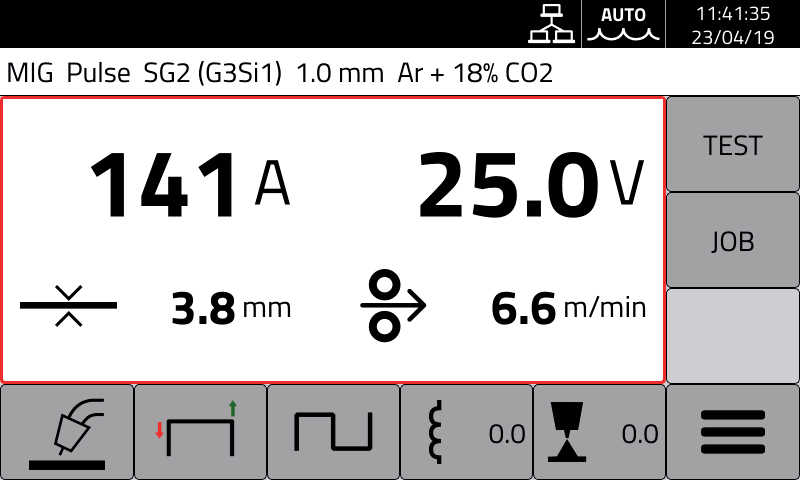


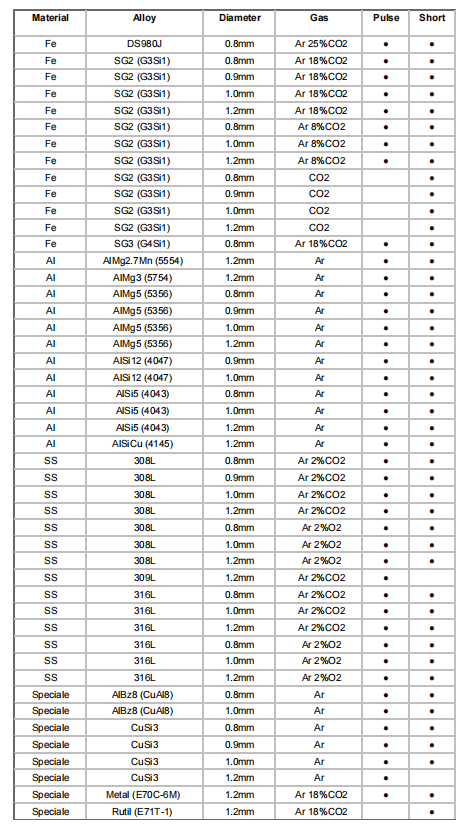
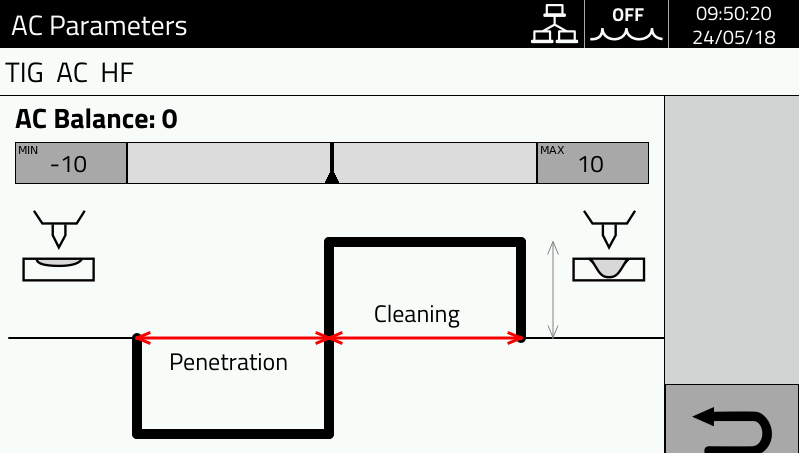
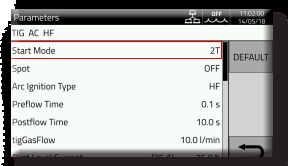
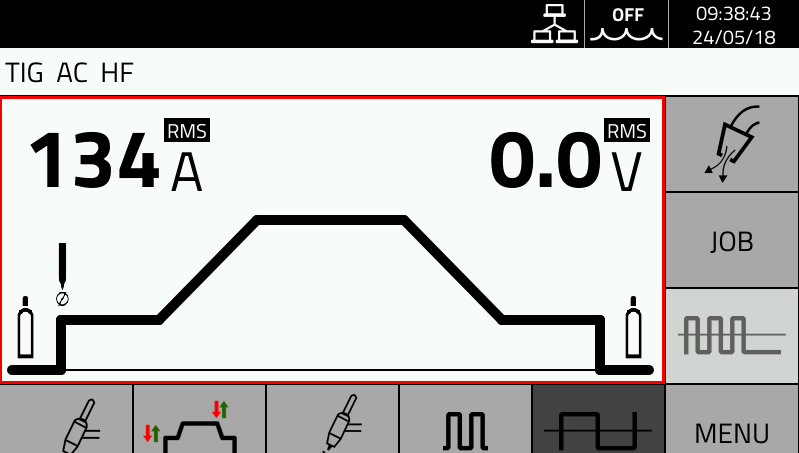
Conclusion
In the last 15 years, inverter welding machines have undergone rapid transformation. They’re constantly improving both functionality and cost. However, that doesn’t imply that we have to bury transformer welding machines as they also have a crucial place in the industry. Ultimately, it all comes down to an individual weighted decision depending on numerous factors.
- Material collected from working with Kemppi, Orbimatic, Orbitalum, Otto Arc, Cebora.
- Information from the net.
- Information from other published sources AWS, TWI, Leading manufacturers
- Own personal experience






